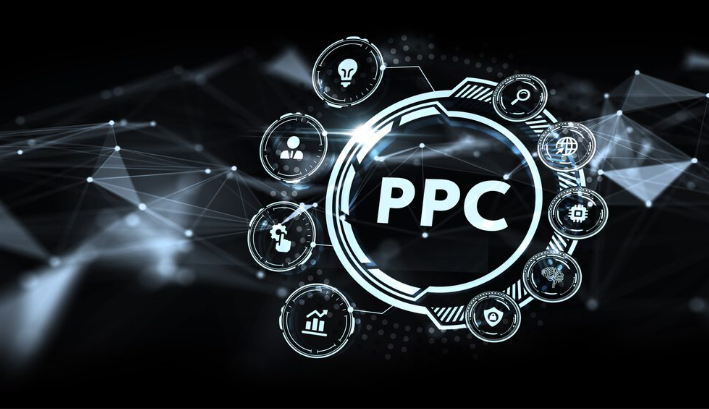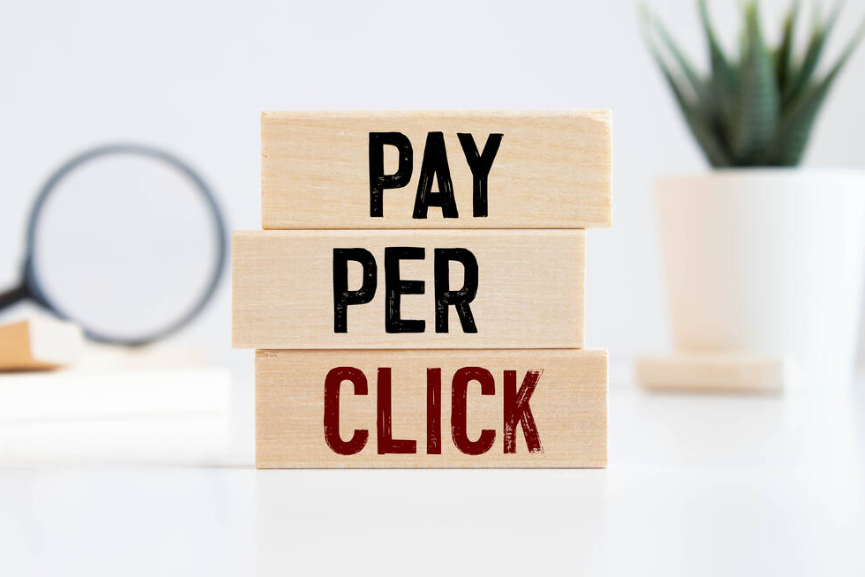Grasping the Fundamentals of PPC
Pay-per-click (PPC) marketing involves advertisers paying a fee each time their ad is clicked. Rather than earning visits organically, businesses can purchase visits to their site. One of the most common methods of PPC is search engine advertising, where advertisers bid for ad placements in a search engine’s sponsored links when users search for specific keywords related to their products or services.
It is one of the best ways business people can be sure their advertisements will reach people interested in the materials the business makes available. With option two, the particular key phrases prime the businesses’ ads to be shown to the most relevant clientele. However, PPC is not restricted to search engines only. Instead, it comprises display advertising on platforms like Facebook, Instagram, and LinkedIn. Its targeting option is unique as it’s based on demographics, interests, and overall behaviour, which makes it easier to nail your target audience.
One more crucial part of the information needed to start PPC is understanding auctions provided by search engines and other platforms. Today, advertisers actively vie for keywords in which they wish to see their ads placed; the location of adverts depends on the bid amount, amongst other factors such as the quality of adverts. A higher quality score results in better-ranked ad placements and can be obtained at a lower price; hence, there is a need to create quality, relevant ads.
Additionally, PPC’s flexibility allows businesses to set daily or monthly budgets, giving them control over advertising spending. Advertisers can start with a small budget and scale up as they see positive results. This much control, combined with the added advantage of directing traffic to the required audience, makes PPC an advertising tool appealing to businesspeople who need to drive traffic and generate leads as quickly as possible.

Essential Elements of a PPC Campaign
An effective PPC campaign begins with understanding your target audience. This information saves time forming complete audience profiles based on the online audience’s demographic data, interest levels, and behaviors. These profiles help define ad targeting and create appropriate text, ensuring your ads reach the right people.
Another factor is identifying the right platforms to use in the campaign. While Google Ads is widely used, don’t ignore the potential of social media platforms like Facebook, Instagram, or LinkedIn. These platforms offer unique targeting options and ad formats that better align with your business goals.
Keyword selection is fundamental to your campaign’s success. Conduct thorough keyword research to identify terms that your potential customers use. This includes both extensive and specific keywords associated with your business or offerings. Correct keyword selection allows you to place the ads when people are interested in your offers.
Third, the structure of your PPC ads also helps enhance their conversion into sales. You should emphasize readability and brevity when creating your advertisement and choose high-impact keywords. Your argot must outline your unique selling points and include a call to action. Graphics like images or videos can also enhance the area similarly and attract the learners’ attention.
The last component of the architectural model is landing page optimization. The landing page must be related to the advert and easy to navigate. It should load quickly, be mobile-friendly, and contain a clear call to action that guides visitors toward conversion.
Thus, various tracking mechanisms are imperative. Use tracking codes and conversion pixels in your advertisements to ensure you determine their effectiveness. This will help you decide which ads on your website generate traffic and which ads need enhancement for continuous PPC management.
Designing Impactful PPC Advertisements
The design of your PPC ads is crucial for capturing attention and driving clicks. Writing persuasive ads involves building powerful messages that appeal to your audience. Use the meta description to emphasize your USPs and ensure that there is a call to action.
Graphic images and videos should also be integrated into your ad placement programs. Using visuals can make your ad more noticeable and elicit better interaction with the target audience. Make sure that all of these elements tie into the content of your ad and are consistent with the image you have decided on for your company.
Concentrate on ad extensions to make more information about the concrete ad and get a better perception. Such extensions can be site links, call buttons, and location data. They make your ad more informative and easy to find, upgrading its quality to improve the user experience.
Include a new ad text and image version and test it constantly. With A/B testing, you can discover what elements work best and improve your ads based on the results. Also, try out different keywords, tags, and pictures to see which ones your target customers will respond positively to.
Consider the user’s journey from the ad to a landing page. Ensure that the landing page is consistent with the advertisement regarding messaging and design. A cohesive experience increases the likelihood of conversions and reduces bounce rates.
Remember the specific platform requirements and best practices for each PPC channel you are using. What works well on Google Ads might need adjustments for platforms like Facebook or LinkedIn due to different user behaviours and ad formats.
Focusing on these elements can help you create impactful PPC advertisements that attract clicks and drive meaningful engagement and conversions.
Strategies for Budgeting and Bidding
Effective budgeting and bidding strategies are vital for maximizing the impact of your PPC campaigns. First, set financial parameters that are achievable but also fit the organization’s overall marketing goals. The average cost per click from similar industries or the average price per click can help you set the best budget and get the most out of your cash.
Conduct extensive research on the three major PPC platforms to ensure that you understand the different bidding options available. Some known approaches to Internet advertising are based on cost per click, cost per thousand impressions, and cost per sale. All the strategies are effective in their unique way, depending upon what is targeted: clicks, impressions, or conversions.
Consider using automated bidding strategies offered by platforms like Google Ads. Based on performance data, these tools can adjust bids in real-time, helping you achieve your campaign objectives more efficiently. For instance, Target CPA or ROAS can automate bid adjustments to meet your cost-per-acquisition or return on ad spend targets.
Seasonality and market trends should also influence your budgeting and bidding decisions. Allocate more budget during peak seasons or when you launch new products to capitalize on increased search volumes and consumer interest. Conversely, reduce spending during off-peak times to maintain cost efficiency.
Utilize bid adjustments to fine-tune your strategy. Adjust bids based on device type, location, and time of day to ensure your ads are shown when and where they will most likely succeed. For example, increasing bids for mobile devices if your audience primarily uses smartphones can boost your campaign performance.
By carefully managing your budget and selecting the right bidding strategies, you can enhance the effectiveness of your PPC campaigns and achieve your marketing objectives.
Monitoring and Evaluating Outcomes
Monitoring and evaluating your PPC campaigns is a continuous process that involves tracking and analyzing various metrics. CTR, the conversion rate of the ads, and ROAS are important metrics that help determine the ads’ performance.
This can be done in Google Analytics, and tools collect this data and prepare reports on specific platforms. They help you track all users’ actions, transform them so that the results are more measurable, and evaluate the efficacy of your advertising efforts. Create specific and tailored analytical accounts for the most relevant KPI to your organization’s objectives.
Do extensive analysis to upscale your PPC plan. For instance, if you notice a high CTR but a low conversion rate, it may indicate that your landing page needs improvement or that the ad copy isn’t aligning well with user expectations. Similarly, a high bounce rate could suggest that the landing page content is irrelevant to the ad.
Review your keyword performance regularly to identify which terms drive the most traffic and conversions. Pause or remove underperforming keywords and allocate more of the budget to high-performing ones. Use negative keywords to filter out irrelevant traffic and improve your ad’s relevance.
Conduct A/B testing to compare different versions of your ads and landing pages. Try different headlines, descriptions, images, or calls to action to see which ones your audience will respond to. The interactivity, the constant tweaking of these elements with the help of performance data, will eventually allow you to achieve the maximum benefit of your PPC campaign.
Avoiding Common PPC Pitfalls
Neglecting to update and optimize your PPC campaigns regularly can lead to missed opportunities and inefficient spending. Periodically review and adjust your keyword list to ensure relevance and performance. Ignoring the importance of ad copy testing can also be detrimental. Continually test different versions of your ad copy to identify which messages resonate most with your audience.
If you fail to optimize your landing pages, you realize you have a high bounce rate and low conversion rate. Make sure that the landing pages you use reflect how the ads of the products appear and are easy to use.
Besides, when you do not set the right tracking system, you may be unable to monitor the effectiveness of your campaigns. Use tracking codes and conversion pixels to get the correct data and make the right results. Lastly, avoid spreading your budget too thin across many keywords or platforms; focus on what works best for your specific goals and audience.


